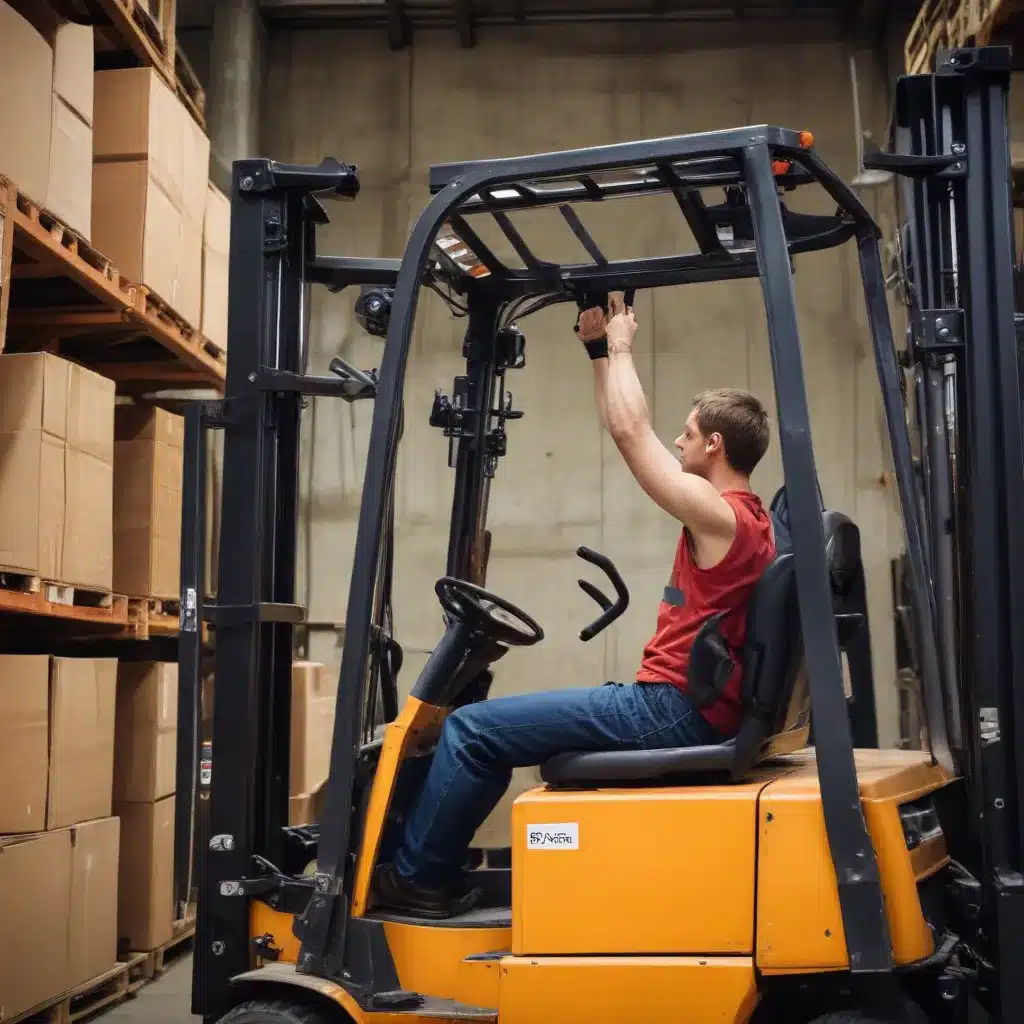
The Hidden Costs of Forklift Operator Injuries
As a seasoned industry expert in forklifts, warehousing, and logistics, I’ve seen firsthand the impact that musculoskeletal injuries can have on forklift operators and the wider business. These injuries, ranging from chronic back pain to debilitating nerve damage, pose a significant challenge both for the individual operator and the overall efficiency and productivity of the warehouse or logistics operation.
Forklift operators are exposed to a host of risk factors that can lead to musculoskeletal disorders, including prolonged sitting, repetitive movements, and whole-body vibrations. According to the Occupational Safety and Health Administration (OSHA), work-related musculoskeletal disorders are “the most widespread occupational health hazard facing our Nation today.” Nearly 2 million workers suffer from these types of injuries each year, with the median number of lost workdays being seven.
The direct costs associated with musculoskeletal disorders are staggering, reaching an estimated $15 to $20 billion per year, with total annual costs potentially as high as $54 billion. These figures encompass workers’ compensation claims, lost productivity, and the downstream effects on operational efficiency. When a forklift operator is sidelined due to a back injury or chronic pain, it can create a domino effect, disrupting workflows, delaying deliveries, and placing additional strain on the rest of the team.
Identifying the Most Common Forklift Operator Injuries
To effectively address the issue of musculoskeletal injuries among forklift operators, it’s crucial to understand the most common types of injuries and their underlying causes. These include:
Lower Back Pain
Prolonged sitting, coupled with the constant vibrations and jolts experienced while operating a forklift, can lead to chronic lower back pain. Operators may also suffer from disc compression, sciatica, and other spinal issues due to the repetitive stress on the lumbar region.
Neck and Shoulder Strain
Repeatedly twisting and turning the neck to see behind the forklift, as well as the strain of operating the hydraulic controls, can result in significant neck and shoulder pain. Operators may experience muscle fatigue, stiffness, and even nerve impingement in these areas.
Knee Pain
Forklift operators who work on stand-up models often experience knee pain due to the constant pressure of bracing against the movements of the vehicle. Operators of sit-down forklifts may also experience knee strain from twisting motions.
Wrist and Hand Injuries
Gripping the steering wheel for extended periods, as well as the repetitive nature of operating the hydraulic controls, can lead to tendinitis, carpal tunnel syndrome, and other hand and wrist problems.
Whiplash
Sudden acceleration or braking can cause the operator’s head to jerk abruptly, leading to whiplash-related symptoms such as neck pain, stiffness, headaches, and even dizziness or difficulty concentrating.
Implementing Ergonomic Best Practices
Addressing the root causes of these common forklift operator injuries requires a multi-faceted approach that focuses on both individual operator habits and the overall workplace environment. By implementing a comprehensive ergonomics program, employers can make significant strides in reducing musculoskeletal disorders and their associated costs.
Operator-Focused Strategies
- Encourage Regular Stretching: Encourage operators to take regular breaks to stretch their hands, shoulders, and neck, both before and after shifts, as well as during downtime.
- Promote Proper Seating Posture: Ensure operators are properly positioned in the seat, with their feet easily reaching the pedals and the backrest tilted slightly backward to support the spine.
- Eliminate Wallet/Bulky Objects: Advise operators to remove wallets or other bulky objects from their back pockets, as these can contribute to poor posture and strain.
- Emphasize Smooth Operation: Instruct operators to start and stop the forklift smoothly, avoiding sudden jerks or rapid acceleration that can lead to whiplash.
Workplace Enhancements
- Maintain Optimal Floor Conditions: Regularly inspect and repair any uneven surfaces, potholes, or other floor issues that can exacerbate vibration and impact on the operator.
- Invest in Ergonomic Accessories: Equip forklifts with features like vibration-dampening seats, adjustable backrests, and grab handle-mounted horn buttons to reduce strain on the operator’s body.
- Prioritize Visibility: When purchasing new forklifts, look for models with masts designed for optimal visibility, angled cross braces, and low step heights to minimize neck strain.
- Implement Telematics and Monitoring: Utilize telemetry devices that provide real-time insights into operator behavior, pre-shift checklists, and multi-view cameras to enhance safety and ergonomics.
Fostering a Culture of Ergonomic Awareness
Ultimately, addressing the issue of musculoskeletal injuries among forklift operators requires a holistic approach that combines operator education, workplace ergonomic improvements, and a culture of safety and well-being. By empowering operators to understand the risks, equipping them with the tools and resources to mitigate those risks, and fostering an environment that prioritizes ergonomics, employers can significantly reduce the human and financial costs associated with these types of injuries.
At Forklift Reviews, we are committed to providing industry-leading insights and practical tips to help warehouse and logistics professionals optimize their operations. By following the best practices outlined in this article, you can protect your most valuable asset – your forklift operators – and ensure the long-term success and sustainability of your business.
Key Takeaways
- Musculoskeletal disorders are the most widespread occupational health hazard facing forklift operators, with an estimated $45-$54 billion in annual costs.
- Common forklift operator injuries include lower back pain, neck and shoulder strain, knee pain, wrist and hand issues, and whiplash.
- Implementing ergonomic best practices, such as encouraging regular stretching, promoting proper seating posture, and investing in specialized equipment, can significantly reduce the risk of these injuries.
- Fostering a culture of ergonomic awareness and safety is essential for protecting forklift operators and optimizing overall operational efficiency.
By prioritizing forklift operator ergonomics, you can safeguard your workforce, minimize costly injuries, and position your business for long-term success in the dynamic world of warehousing and logistics.

